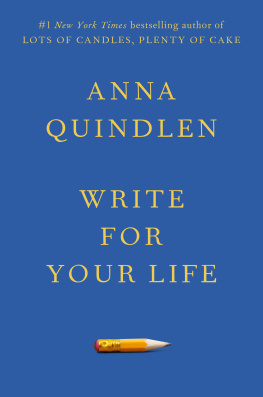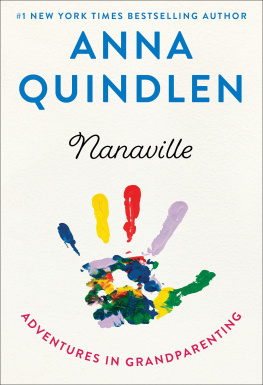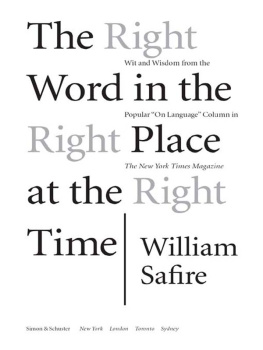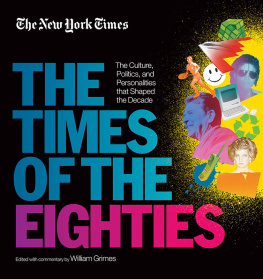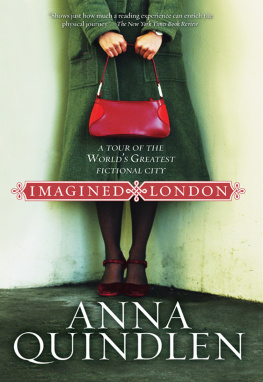Edwin Diamond - Behind the Times:: Inside the New New York Times
Here you can read online Edwin Diamond - Behind the Times:: Inside the New New York Times full text of the book (entire story) in english for free. Download pdf and epub, get meaning, cover and reviews about this ebook. year: 1994, publisher: Villard, genre: Art. Description of the work, (preface) as well as reviews are available. Best literature library LitArk.com created for fans of good reading and offers a wide selection of genres:
Romance novel
Science fiction
Adventure
Detective
Science
History
Home and family
Prose
Art
Politics
Computer
Non-fiction
Religion
Business
Children
Humor
Choose a favorite category and find really read worthwhile books. Enjoy immersion in the world of imagination, feel the emotions of the characters or learn something new for yourself, make an fascinating discovery.

- Book:Behind the Times:: Inside the New New York Times
- Author:
- Publisher:Villard
- Genre:
- Year:1994
- Rating:4 / 5
- Favourites:Add to favourites
- Your mark:
- 80
- 1
- 2
- 3
- 4
- 5
Behind the Times:: Inside the New New York Times: summary, description and annotation
We offer to read an annotation, description, summary or preface (depends on what the author of the book "Behind the Times:: Inside the New New York Times" wrote himself). If you haven't found the necessary information about the book — write in the comments, we will try to find it.
Behind the Times:: Inside the New New York Times — read online for free the complete book (whole text) full work
Below is the text of the book, divided by pages. System saving the place of the last page read, allows you to conveniently read the book "Behind the Times:: Inside the New New York Times" online for free, without having to search again every time where you left off. Put a bookmark, and you can go to the page where you finished reading at any time.
Font size:
Interval:
Bookmark:
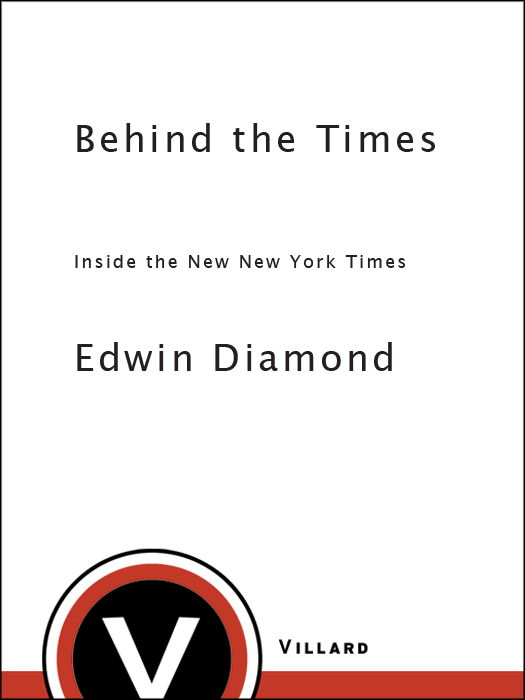
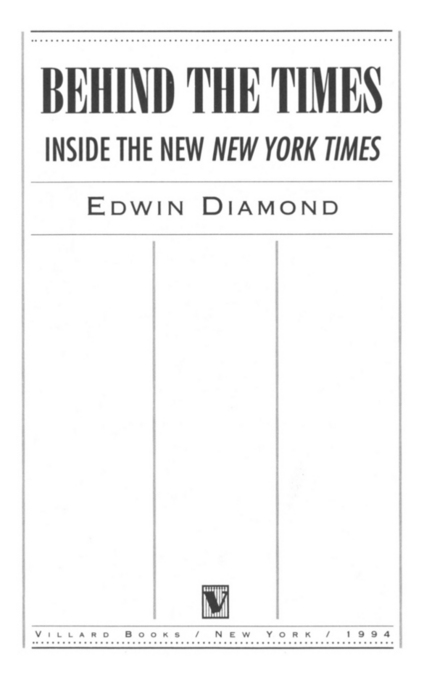
Copyright 1993 by Edwin Diamond
All rights reserved under International and Pan-American Copyright Conventions. Published in the United States by Villard Books, a division of Random House, Inc., New York, and simultaneously in Canada by Random House of Canada Limited, Toronto.
Villard Books is a registered trademark of Random House, Inc.
Library of Congress Cataloging-in-Publication Data
Diamond, Edwin.
Behind the Times : inside the new New York Times / by Edwin
Diamond.
p. cm.
eISBN: 978-0-307-83337-2
1. New York Times. I. Title.
PN4844.N42N375 1994
071.471dc20 93-14744
v3.1

Weeknights at ten, a driver leaves the New York Times Building on West 43rd Street and carries two copies of the first edition of the next days paper to the West 67th Street residence of Max Frankel, the papers executive editor. If Frankel is at a business dinner or social engagement, he may excuse himself to be home soon after the driver arrives. For the next two and a half hours, he reads the paper from front to back: news, features, reviews. Some nights, he pushes himself to look at the food recipes in the Living section, at the wedding notices, at the copy in the department stores advertising. As Frankel explains it, he is trying to see the Times as its readers do, in finished form. He asks himself the traditional Times questions about whether the reader is reading a Times kind of story handled in a Times way. But shortly after he took over the top editing job in late 1986, he added a fresh requirement: The Times, he concluded, must be made user friendly and inviting to read. Frankel keeps a memo pad beside him for writing notes to one or another of the nine hundred men and women who report, write, illustrate, edit, and lay out the paper. While some of his notes praise or criticize what hes just read, Frankel comments to his editors mostly on the overall product: Were there too many long pieces, or writing that was too wooden? Did the pictures and headlines invite readers into stories? The Times, he explains, reaching for an analogy, is like a supermarket of news. The paper has to keep all its shelves richly stocked. As readers hurry down the aisles, Weve got to tell them whats there. Frankels exercise each night with newspaper and memo pad is designed to offer systemic commentsmanager to staffso that customers keep patronizing the supermarket. Ever the wordsmith, hes also likened the Times to a symphony orchestra, and himself to its conductor.
Frankel was fifty-six years old when he became the eleventh editor of the New York Times. Given the normal retirement age of sixty-five for news department executives, he can expect to run the Times until 1995. Just halfway through his tenure, however, he found that the Times all too often ran him.
The most public breakdown in the system occurred in the early spring of 1991. The news staff was coming down from the high of the Gulf war. The papers extensive coverage of Operations Desert Shield and Desert Storm was an affirmation of the way the Times really saw itself: not a folksy marketplace but the worlds greatest news-gathering organizationthe institutional Times, balanced, thorough, authoritative, a colossus astride the globe. The allies one-hundred-hour ground campaign over, George Bush riding high in the polls, Saddam Hussein beaten if not bowed, the Times took stock of its own performance. Winners & Sinners, an in-house bulletin used at the time by Frankel and his top editors to pass on comments about the staffs work, noted that it wanted to call an honor roll for the papers coverage of the Gulf warbut it didnt have the space. The men and women who have yet again made the paper mandatory reading for the country and the world at a time of crisis could not possibly be listed here without glaring omissions and distortion through truncation, the bulletin declared. Just a list of those who have worked six- and seven-day weeks since the gulf crisis began would fill these pages and spill over. Our correspondents in the Middle East have been magnificent, their work supplemented splendidly by reporters in Washington, around the country and New York. Once again, the editors concluded, to work at our newspaper is to experience awe.
Within a matter of weeks, the air of self-congratulation evaporated. Frankels talk about a Times kind of story told in a Times kind of way took on new meaning. In the editions of Wednesday, April 17, 1991, the Times ran a profile of the woman who said she was raped by William Kennedy Smith at the Kennedy family estate in Palm Beach, Florida, during the Easter holiday two weeks before. The story carried the double byline of Fox Butterfield and Mary B. W. Tabor. It disclosed that the womans name was Patricia Bowman and offered, in numbing detail, particulars of her life, beginning with her birth date, August 11, 1961, in Akron, Ohio. Noting that she had a poor academic record at Tallmadge High School, the article went on to quote a school acquaintance who said Bowman was popular socially and had a little wild streak. The Times helpfully explained that meant she liked to drive fast cars, go to parties and skip classes. The profile reported that Bowman had been seriously hurt in a car crash, had attended a number of small colleges without graduating, and that she had a daughter born out of wedlock (She had a brief affair with Johnny Butler the father of her child, friends say. It is unclear why the couple did not marry). Two paragraphs were devoted to her adult driving record, and the information that she received seventeen tickets for speeding, careless driving, and being involved in an accident between 1982 and 1990. An account of Bowmans barhopping nights on the Palm Beach club scene required another four paragraphs. A chef, interviewed by the Times, described how Bowman came by the restaurant where he worked late one night, ate a special meal he cooked for her, accompanied him to a bar, and then fell into a conversation with some other menleaving him, the story said, disappointed. The profile also took up the fast times and marital history of Bowmans mother. Jean Bowman, it seems, worked her way up from the secretarial pool of an Akron machinery company to a corporate position, divorced Bowmans father, and eventually married Michael G. ONeil, the chairman of the General Tire and Rubber Companyone of her companys largest customers, the Times noted. (In case anyone missed that point, the article included the information that Jean Bowman was named as the other woman in ONeils divorce.) In 1989, the Times reported, Patricia Bowmans stepfather ONeil bought her a house near his retirement home, paying $161,800 for a new contemporary three bedroom with pale peach walls. ONeil was successful, blunt spoken, and used to getting his way, the Times said, hinting at the theme that the two principals in the forthcoming rape trial were actually surrogates: the real story pitted one powerful, wealthy Irish Catholic against another powerful, wealthy Irish Catholic family, perhaps the most prominent in the country. The
Font size:
Interval:
Bookmark:
Similar books «Behind the Times:: Inside the New New York Times»
Look at similar books to Behind the Times:: Inside the New New York Times. We have selected literature similar in name and meaning in the hope of providing readers with more options to find new, interesting, not yet read works.
Discussion, reviews of the book Behind the Times:: Inside the New New York Times and just readers' own opinions. Leave your comments, write what you think about the work, its meaning or the main characters. Specify what exactly you liked and what you didn't like, and why you think so.

